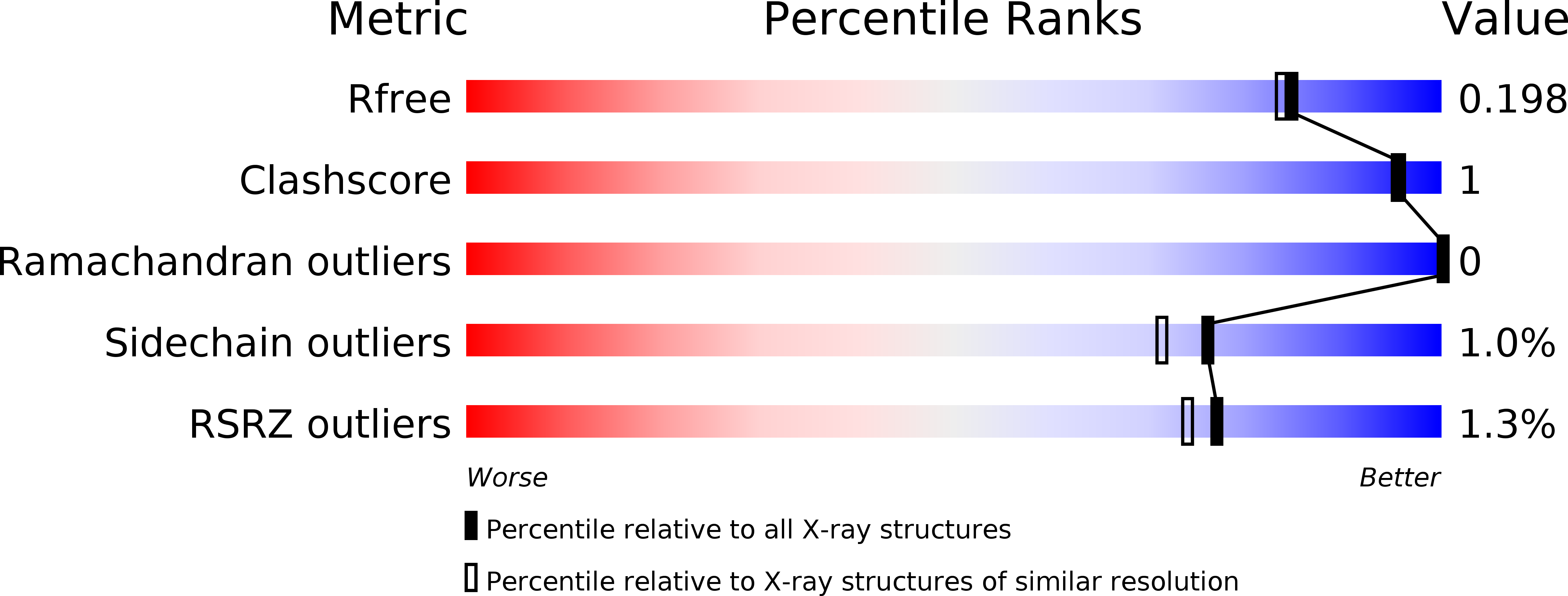SMUG2 DNA glycosylase from Pedobacter heparinus as a new subfamily of the UDG superfamily
Pang, P., Yang, Y., Li, J., Wang, Z., Cao, W., Xie, W.(2017) Biochem J 474: 923-938
- PubMed: 28049757
- DOI: https://doi.org/10.1042/BCJ20160934
- Primary Citation of Related Structures:
5H0J, 5H0K - PubMed Abstract:
Base deamination is a common type of DNA damage that occurs in all organisms. DNA repair mechanisms are essential to maintain genome integrity, in which the base excision repair (BER) pathway plays a major role in the removal of base damage. In the BER pathway, the uracil DNA glycosylase superfamily is responsible for excising the deaminated bases from DNA and generates apurinic/apyrimidinic (AP) sites. Using bioinformatics tools, we identified a family 3 SMUG1-like DNA glycoyslase from Pedobacter heparinus (named Phe SMUG2), which displays catalytic activities towards DNA containing uracil or hypoxanthine/xanthine. Phylogenetic analyses show that SMUG2 enzymes are closely related to family 3 SMUG1s but belong to a distinct branch of the family. The high-resolution crystal structure of the apoenzyme reveals that the general fold of Phe SMUG2 resembles SMUG1s, yet with several distinct local structural differences. Mutational studies, coupled with structural modeling, identified several important amino acid residues for glycosylase activity. Substitution of G65 with a tyrosine results in loss of all glycosylase activity. The crystal structure of the G65Y mutant suggests a potential misalignment at the active site due to the mutation. The relationship between the new subfamily and other families in the UDG superfamily is discussed. The present study provides new mechanistic insight into the molecular mechanism of the UDG superfamily.
Organizational Affiliation:
School of Pharmaceutical Sciences, The Sun Yat-Sen University, 132 E. Circle Rd. University City, Guangzhou, Guangdong 510006, People's Republic of China.














